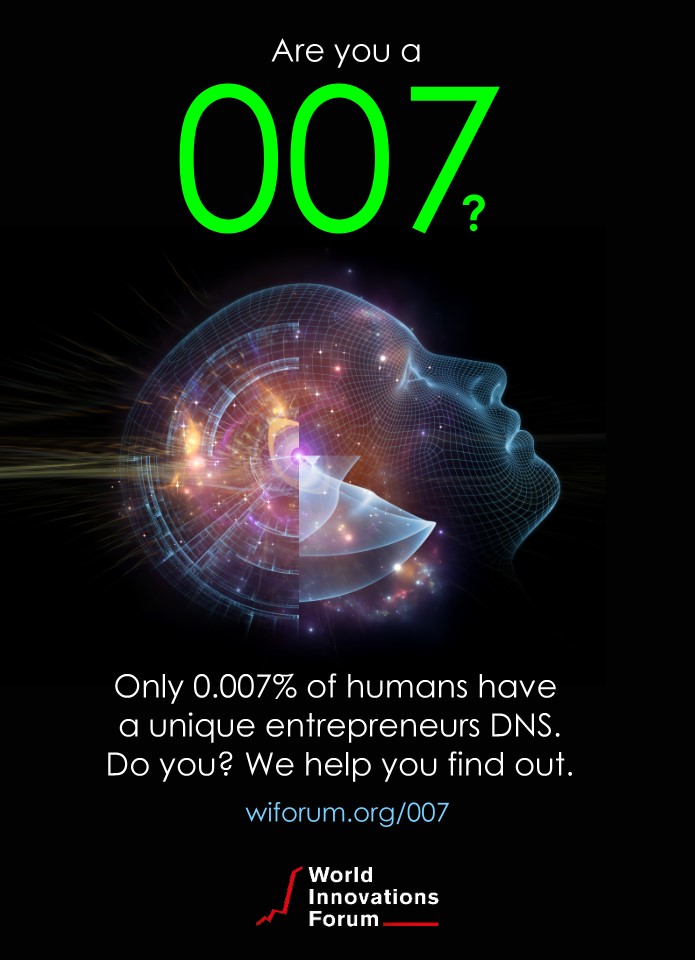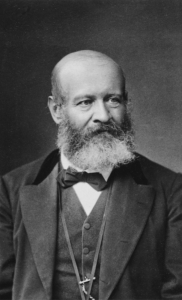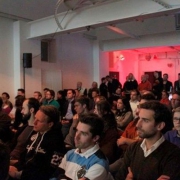In a world that’s rapidly advancing, where the intersection of technology and business continuously redefines industries, it’s imperative for corporate leaders to stay informed and adept. For those at the helm of management in large companies and for AI technologists, understanding the nuances of Innovation, Transformation, and Automation is not just a luxury—it’s a necessity.
1) The Core Differences: Innovation, Transformation, and Automation
- Innovation can be visualized as the heartbeat of any forward-thinking organization. It’s the act of introducing something novel—be it a groundbreaking product, an ingenious process, or a revolutionary idea. The essence of innovation lies not just in conception but in execution. It’s about fresh thinking that manifests tangible value. But innovation isn’t a mere sporadic burst of creativity; it’s a continual commitment to pushing boundaries.
- Transformation, on the other hand, is the phoenix of the corporate world. It signifies a metamorphic shift in how a company operates. This could encompass a change in its foundational business model, core operations, or even its cultural ethos. Unlike mere change, which is incremental, transformation is holistic, giving birth to an entirely renewed entity.
- Automation is the application of technology designed to perform tasks with minimal human touchpoints. If innovation is the heart and transformation the soul, automation is the muscle of modern businesses. It’s about leveraging technology to its full potential, ensuring efficiency, consistency, and often, accuracy that the human hand might falter in.
2) Living Examples: Demonstrating the Power of Three
- When we recall Innovation, Apple’s introduction of the iPhone is a luminary. Not just a new product, the iPhone changed how consumers thought about phones. It wasn’t just a device for calls—it became an integral part of our daily lives, blending communication, entertainment, and work.
- Transformation has its cautionary tales, with Blockbuster being a prominent one. As streaming platforms rose to dominance, Blockbuster, once a giant in its realm, attempted to transition from physical stores to online content. Their journey underscores that transformation, while crucial, isn’t a guaranteed success but a strategic necessity.
- And for Automation, car manufacturing offers a crisp illustration. The adoption of robotic arms in assembly lines has not only sped up production but also introduced a level of precision previously unattainable. Similarly, in the digital space, chatbots attending to customer queries at all hours exemplify automation’s prowess.
3) The Art of Choosing: When to Innovate, Transform, or Automate
- Innovation is the tool of choice when exploring uncharted territories. Companies aiming to capture a new market segment, address a previously unidentified need, or offer a unique solution often lean on innovation. It’s about building a bridge where there’s been no path before.
- Transformation is the answer when there’s a seismic shift in the industry landscape. When external factors—technological disruptions, changing consumer behaviors, or geopolitical shifts—demand that companies reinvent themselves, transformation becomes inevitable. It’s about ensuring the ship not only stays afloat but can navigate the new waters adeptly.
- Automation becomes the focus when efficiency is the goal. Whether it’s to reduce overhead costs, eliminate repetitive tasks, or ensure a consistent quality of output, automation streamlines processes, making them more predictable and scalable.
4) Weighing the Economics and Strategy
- Investing in Innovation can be a gamble. The R&D costs, market research, and prototype testing demand substantial financial commitments. However, successful innovations often yield exponential returns, granting companies not just revenue but a competitive edge.
- Transformation is both a financial and cultural investment. Beyond capital allocation for new tools or business models, it demands a shift in mindset across the organization. The payoff, though, is longevity and continued relevance in an evolving marketplace.
- Automation, while demanding initial technological investments, promises long-term savings. Reducing manual labor, minimizing errors, and accelerating processes, it ensures companies can deliver more for less.
5) Crafting and Executing: From Ideas to Reality
- Innovation thrives in environments that nurture creativity. Beyond financial backing, it requires a cultural acceptance of risk, iterative testing, and a feedback-rich ecosystem. It’s a balance of brainstorming sessions, prototyping labs, and market tests.
- Transformation is a marathon. It necessitates buy-in from all organizational levels, from the C-suite to the front-line employees. Often, external consultants, familiar with the transformation journey, can offer valuable insights. It’s a mix of strategy meetings, training sessions, and constant communication.
- For Automation, technical prowess is paramount. Integrating new systems with legacy ones, ensuring staff training for automated tools, and maintaining these systems are integral. It’s about tech assessments, integration blueprints, and regular software updates.
Conclusion
As we stand at the cusp of a future molded by AI, understanding the trinity of Innovation, Transformation, and Automation becomes crucial. For management and AI technologists, it’s not about choosing one over the other but discerning which to leverage when, ensuring that companies are not just surviving but thriving in the corporate landscape of tomorrow.


 Many of us read the news and daily updates from around the world every morning. We know already what worked and what didn’t from China, from South Korea, from Singapore and many other Asian countries. But this is only if you speak English or are digital savvy enough to automatically translate everything into your language. In recent discussions we learned that far more than half of the governments in the world do not speak english. They are dependent of what others tell them what is happening. Also those who are looking for test equipment, treatment, best practices, what type of hygiene measures they may consider long before the rest of the word slowly woke up. The English language no longer is the universal language for doing business around the globe, it is the number one language of communication also in any kind of crisis. Speaking one common language – at least as a second language – is paramount for our survival, not only in business but also in our general life. And it will also closing the gap between rich and poor, My proposal for the United Nation: Making “English as a common language on earth” the SDG #18.
Many of us read the news and daily updates from around the world every morning. We know already what worked and what didn’t from China, from South Korea, from Singapore and many other Asian countries. But this is only if you speak English or are digital savvy enough to automatically translate everything into your language. In recent discussions we learned that far more than half of the governments in the world do not speak english. They are dependent of what others tell them what is happening. Also those who are looking for test equipment, treatment, best practices, what type of hygiene measures they may consider long before the rest of the word slowly woke up. The English language no longer is the universal language for doing business around the globe, it is the number one language of communication also in any kind of crisis. Speaking one common language – at least as a second language – is paramount for our survival, not only in business but also in our general life. And it will also closing the gap between rich and poor, My proposal for the United Nation: Making “English as a common language on earth” the SDG #18. In only 10 weeks the world has turned to digital faster than all the efforts of even the most powerful governments on earth in the last 10 years. Companies with a home office concept could almost seamlessly transition from their office buildings to home offices. But going digital is not only an emergency action to stay in business: In the past few weeks we had far more client interactions online than ever before. Trying to setup a meeting, finally finding a convenient day and time, traveling an hour to do a meeting for another hour is over. TODAY: “Do you have a moment?” – “Sure – give me 5 minute” – “How can I help” – We have this and that issue … Ok ….” 15 minute later, everything was done. And not next week – but immediately. We accelerated work by 2.5 hours and reduced the “problem to solution” time by maybe a week. In our particular case run so called demo days after each startup acceleration program. We rent a venue invite investors and let our entrepreneurs present in front of approximately 15 to 25 investors sometimes a little more. This year we just invited 800 investors from around the world and have already more registrations than ever before. This year, the Demo Day is digital and everybody can join it on April 8, from wherever they are. A huge advantage. Of course this is no real substitute for face to face meetings but it is a powerful option that we will consider in the future. And we also have our global 3 day WIForum Digital 2020 Conference this year in June. 3 days and we expect 2,000 people from over 40 countries. Of course it is fully digital. In countries where Corona may have been enough contained we will do – like last time – public viewings in the respective cities, have about 40 – 50 speakers, including governments, universities and many top talented innovative businesses. All digital, and on top of all, no Co² emission, no travel no energy expenditure, maximum cost reduction and more. Even after corona is contained our work life will never be like it was. We learned to become more independent and far more efficient if we put our old “protocols” aside and spend time for meetings when and wherever, get problems solved immediately and build relations that go far deeper than ever before. However what is an advantage for some will become an even bigger disadvantage for the slow and far less agile businesses.
In only 10 weeks the world has turned to digital faster than all the efforts of even the most powerful governments on earth in the last 10 years. Companies with a home office concept could almost seamlessly transition from their office buildings to home offices. But going digital is not only an emergency action to stay in business: In the past few weeks we had far more client interactions online than ever before. Trying to setup a meeting, finally finding a convenient day and time, traveling an hour to do a meeting for another hour is over. TODAY: “Do you have a moment?” – “Sure – give me 5 minute” – “How can I help” – We have this and that issue … Ok ….” 15 minute later, everything was done. And not next week – but immediately. We accelerated work by 2.5 hours and reduced the “problem to solution” time by maybe a week. In our particular case run so called demo days after each startup acceleration program. We rent a venue invite investors and let our entrepreneurs present in front of approximately 15 to 25 investors sometimes a little more. This year we just invited 800 investors from around the world and have already more registrations than ever before. This year, the Demo Day is digital and everybody can join it on April 8, from wherever they are. A huge advantage. Of course this is no real substitute for face to face meetings but it is a powerful option that we will consider in the future. And we also have our global 3 day WIForum Digital 2020 Conference this year in June. 3 days and we expect 2,000 people from over 40 countries. Of course it is fully digital. In countries where Corona may have been enough contained we will do – like last time – public viewings in the respective cities, have about 40 – 50 speakers, including governments, universities and many top talented innovative businesses. All digital, and on top of all, no Co² emission, no travel no energy expenditure, maximum cost reduction and more. Even after corona is contained our work life will never be like it was. We learned to become more independent and far more efficient if we put our old “protocols” aside and spend time for meetings when and wherever, get problems solved immediately and build relations that go far deeper than ever before. However what is an advantage for some will become an even bigger disadvantage for the slow and far less agile businesses. One of the new key words. People are isolated at home and lack of social interactions. Its a very uncomfortable situation to be alone – not only in times of an pandemic. Yet. also here we quickly learned to hang out with friends online. And not just adults but also kids – at least those who have been online before. Multi Player Games and all the other digital entertainment out there comes extremely hande when a whole family stays home. BUT not only to shut of the kids – but to to give them an opportunity to learn about social connections in the digital world. I have been working in the social media world since its inception in 2003. Today, 17 years later, I have an equal amount of friends that I never met face to face in my entire life. From some I know far more what is going on in their lives than from some of my family members. My old friend Des Walsh, who I never met in person but have been connected for 10 years now, is older than 99% of my oldest local friends who never touched Facebook. Social Distancing is a problem that we can overcome. And those who have the experience for years, learned about digital body language, read the mind of somebody not by seeing their facial expressions but writing style would certainly not suffer social distancing at all. Whether in business or in our private lives, we learned already so much about others from the daily interactions in the online world that we get a completely different perspective of the media.
One of the new key words. People are isolated at home and lack of social interactions. Its a very uncomfortable situation to be alone – not only in times of an pandemic. Yet. also here we quickly learned to hang out with friends online. And not just adults but also kids – at least those who have been online before. Multi Player Games and all the other digital entertainment out there comes extremely hande when a whole family stays home. BUT not only to shut of the kids – but to to give them an opportunity to learn about social connections in the digital world. I have been working in the social media world since its inception in 2003. Today, 17 years later, I have an equal amount of friends that I never met face to face in my entire life. From some I know far more what is going on in their lives than from some of my family members. My old friend Des Walsh, who I never met in person but have been connected for 10 years now, is older than 99% of my oldest local friends who never touched Facebook. Social Distancing is a problem that we can overcome. And those who have the experience for years, learned about digital body language, read the mind of somebody not by seeing their facial expressions but writing style would certainly not suffer social distancing at all. Whether in business or in our private lives, we learned already so much about others from the daily interactions in the online world that we get a completely different perspective of the media. Another aspect of life is our ability to innovate. In times of a crisis innovation pops right and left. Companies that seem to unable to innovate get all of a sudden very creative. Instead of building car parts they build facial masks to protect people because they know how to build filters. Others get great ideas to build simple but globally accessible apps showing latest discoveries about the virus and best practices to protect one another. We created an initiative “Innovate Fighting Pandemics” to inspire innovative mind, from all trades to share their ideas so that others can find solutions to problems they may have. What we all learned is that innovation is not a reserved domain for highly educated scientists but we all are innovative, as long as we give our mind the free space to think. And in times like now it is simply accelerating for survival – why not always give our mind the freedom to go crazy.
Another aspect of life is our ability to innovate. In times of a crisis innovation pops right and left. Companies that seem to unable to innovate get all of a sudden very creative. Instead of building car parts they build facial masks to protect people because they know how to build filters. Others get great ideas to build simple but globally accessible apps showing latest discoveries about the virus and best practices to protect one another. We created an initiative “Innovate Fighting Pandemics” to inspire innovative mind, from all trades to share their ideas so that others can find solutions to problems they may have. What we all learned is that innovation is not a reserved domain for highly educated scientists but we all are innovative, as long as we give our mind the free space to think. And in times like now it is simply accelerating for survival – why not always give our mind the freedom to go crazy. Another learning we already can envision is to make our business processes and production structures far more flexible in thinking and in operation. Right now, today Mar 27, many companies ca no longer produce because people are at home for their own safety and cannot produce an automobile from their home office. But why is it that brutal? Because we think in maximum “employee utilisation”. The production runs are so hyper optimized that there is not even a “Plan B”. Instead of stopping the motion to zero, we can get a bit smarter. We can already today let 50% of the employees come back who have for sure no symptoms. Ask them to avoid mass transportation and go with individual transportation to the manufacturing plant. Likely hood that they catch a virus is low and cross contamination with those who have been healthy at home for two weeks extremely low. Two weeks later we run the second “mega-shift” and ask the other group to go back to work. Four weeks later we most likely are back to full production.Obviously it takes some major co-ordination, super machine and workplace cleaning in between shift but also during the shifts, orchestrating the right people for a half production load and so forth but that Plan B is probably with millions of dollars per day worth of business loss. Post Corona we will never go back to static operations but will want to consider more flexibility, driving more agility and giving the organization a better competitiveness.
Another learning we already can envision is to make our business processes and production structures far more flexible in thinking and in operation. Right now, today Mar 27, many companies ca no longer produce because people are at home for their own safety and cannot produce an automobile from their home office. But why is it that brutal? Because we think in maximum “employee utilisation”. The production runs are so hyper optimized that there is not even a “Plan B”. Instead of stopping the motion to zero, we can get a bit smarter. We can already today let 50% of the employees come back who have for sure no symptoms. Ask them to avoid mass transportation and go with individual transportation to the manufacturing plant. Likely hood that they catch a virus is low and cross contamination with those who have been healthy at home for two weeks extremely low. Two weeks later we run the second “mega-shift” and ask the other group to go back to work. Four weeks later we most likely are back to full production.Obviously it takes some major co-ordination, super machine and workplace cleaning in between shift but also during the shifts, orchestrating the right people for a half production load and so forth but that Plan B is probably with millions of dollars per day worth of business loss. Post Corona we will never go back to static operations but will want to consider more flexibility, driving more agility and giving the organization a better competitiveness. Small businesses, shops, retailer, reseller, and so forth have been struggling to stay alive, not able competing against the big e-commerce giants. For many it will be a sad ending as they just could not decide to think about smart alternatives they can offer to their customers. The retail market has changed, consumer behavior and desires advanced, but their payer did not. At the same time many, very fortunately, finally understood what customers want and shifted towards online offerings, home delivery, better logistics, better return policies so that ended up become far more competitive and customers find better services. Some countries blocked any innovation that put their small retailers in jeopardy. In times like right now is fires back badly. They have to spend more money to support the failing businesses and have missed the development they couldn’t stop anyway. E-commerce, fast home delivery, return policies and processes have improved more and faster in the past 10 weeks than in the last five years. Countries with weird import regulations, difficult taxation and more see their self sufficiency rate go much faster down than in other countries. Again – life post corona will never go back to what it was before.
Small businesses, shops, retailer, reseller, and so forth have been struggling to stay alive, not able competing against the big e-commerce giants. For many it will be a sad ending as they just could not decide to think about smart alternatives they can offer to their customers. The retail market has changed, consumer behavior and desires advanced, but their payer did not. At the same time many, very fortunately, finally understood what customers want and shifted towards online offerings, home delivery, better logistics, better return policies so that ended up become far more competitive and customers find better services. Some countries blocked any innovation that put their small retailers in jeopardy. In times like right now is fires back badly. They have to spend more money to support the failing businesses and have missed the development they couldn’t stop anyway. E-commerce, fast home delivery, return policies and processes have improved more and faster in the past 10 weeks than in the last five years. Countries with weird import regulations, difficult taxation and more see their self sufficiency rate go much faster down than in other countries. Again – life post corona will never go back to what it was before. Happy Birthday Alfred Escher
Happy Birthday Alfred Escher Africa, most of South East Asia and Latin America has showed phenomenal progress in education already; having 1,000 times more academic graduates than 50 years ago. There are now thousands of Universities across those continents, which created millions of well trained people – but with no equivalent job. What would a math degree do if you can’t work with it? Today there are more than a million graduates in in each of the three continents. The best they can do would be try to get to Europe or the US. Yet – that would be a devastating brain drain and remove all hopes, those nations have today. Before the inception of development aid, education was a function of having better employees to handle the jobs – but here we have better education but no jobs. We realized we needed to find out how exactly did developed countries develop.
Africa, most of South East Asia and Latin America has showed phenomenal progress in education already; having 1,000 times more academic graduates than 50 years ago. There are now thousands of Universities across those continents, which created millions of well trained people – but with no equivalent job. What would a math degree do if you can’t work with it? Today there are more than a million graduates in in each of the three continents. The best they can do would be try to get to Europe or the US. Yet – that would be a devastating brain drain and remove all hopes, those nations have today. Before the inception of development aid, education was a function of having better employees to handle the jobs – but here we have better education but no jobs. We realized we needed to find out how exactly did developed countries develop. In the early and mid 1800’s, Switzerland was the poorest country in Europe. Germany was a poor country, South Korea was one of the poorest countries in Asia, California was a desert and the most western farmland in the US. If not for the Gold, California would hardly be on the map. Yet the natural resources died out quickly. A similar risk the Arabian peninsula is facing. However something changed above and beyond natural resources and tourism: Innovation and entrepreneurship. When Carl Benz, Robert Bosch, Werner v. Siemens and Friedrich Krupp, crazy entrepreneurs with useless ideas, started to engineer, develop, produce, market, sell and scale their businesses, Germany became a wealthy nation. There is nothing else that propelled the German economy as much as these crazy entrepreneurs. At the same time period, Alfred Escher wanted to build a railroad in Switzerland. But since this was a low priority for the very poor Swiss population, he could not raise any capital. So he asked for foreign investment, the sheer amount he raised, required him to create a more international bank, Credit Suisse. Since he needed more talent, he created the Zürich based University, ETH, today one of the most renowned Tech Universities in the world. Did you know the jet engine was invented in France? Now you know why France is still one of the world’s leading aerospace nations. Did you know that Silicon Valley was essentially based on five entrepreneurs? Almost all developed countries started poor, had an environment where crazy entrepreneurs just could do their thing, no matter how useless and money could flow in from foreign investors. The US, Germany, Switzerland, South Korea, Japan, and all others have been based on that very principle. Thousands of years before that it was war, theft and the financing of their armies to do the very same: invent, grow, sell and come to prosperity. Since thousands of years, the nations that carried their goods in foreign countries and received investment from foreign countries rose. And there is no reason to continue that path with an ever larger number of nations. We never tried to answer the question, how can we get 3.5 Billion people out of poverty with the help from the West? We wanted to know what made the developed countries so prosperous and if we could apply that learning to eradicate poverty.
In the early and mid 1800’s, Switzerland was the poorest country in Europe. Germany was a poor country, South Korea was one of the poorest countries in Asia, California was a desert and the most western farmland in the US. If not for the Gold, California would hardly be on the map. Yet the natural resources died out quickly. A similar risk the Arabian peninsula is facing. However something changed above and beyond natural resources and tourism: Innovation and entrepreneurship. When Carl Benz, Robert Bosch, Werner v. Siemens and Friedrich Krupp, crazy entrepreneurs with useless ideas, started to engineer, develop, produce, market, sell and scale their businesses, Germany became a wealthy nation. There is nothing else that propelled the German economy as much as these crazy entrepreneurs. At the same time period, Alfred Escher wanted to build a railroad in Switzerland. But since this was a low priority for the very poor Swiss population, he could not raise any capital. So he asked for foreign investment, the sheer amount he raised, required him to create a more international bank, Credit Suisse. Since he needed more talent, he created the Zürich based University, ETH, today one of the most renowned Tech Universities in the world. Did you know the jet engine was invented in France? Now you know why France is still one of the world’s leading aerospace nations. Did you know that Silicon Valley was essentially based on five entrepreneurs? Almost all developed countries started poor, had an environment where crazy entrepreneurs just could do their thing, no matter how useless and money could flow in from foreign investors. The US, Germany, Switzerland, South Korea, Japan, and all others have been based on that very principle. Thousands of years before that it was war, theft and the financing of their armies to do the very same: invent, grow, sell and come to prosperity. Since thousands of years, the nations that carried their goods in foreign countries and received investment from foreign countries rose. And there is no reason to continue that path with an ever larger number of nations. We never tried to answer the question, how can we get 3.5 Billion people out of poverty with the help from the West? We wanted to know what made the developed countries so prosperous and if we could apply that learning to eradicate poverty. We realized that nearly all developed countries, on three different continents rose to prosperity through innovation and entrepreneurship. Moreover, in understanding that entrepreneurship is not a western ‘invention’ but a universally applicable concept, for thousands of years across all cultures. We began to look for such entrepreneurs in developing and emerging countries. And we found jar dropping entrepreneurs and their startups in Argentina, Ghana, Nigeria, Peru, Vietnam and many other countries. With those results, we decided to turn economic development towards a direction that was probably not very well understood before: innovation and entrepreneurship.
We realized that nearly all developed countries, on three different continents rose to prosperity through innovation and entrepreneurship. Moreover, in understanding that entrepreneurship is not a western ‘invention’ but a universally applicable concept, for thousands of years across all cultures. We began to look for such entrepreneurs in developing and emerging countries. And we found jar dropping entrepreneurs and their startups in Argentina, Ghana, Nigeria, Peru, Vietnam and many other countries. With those results, we decided to turn economic development towards a direction that was probably not very well understood before: innovation and entrepreneurship.